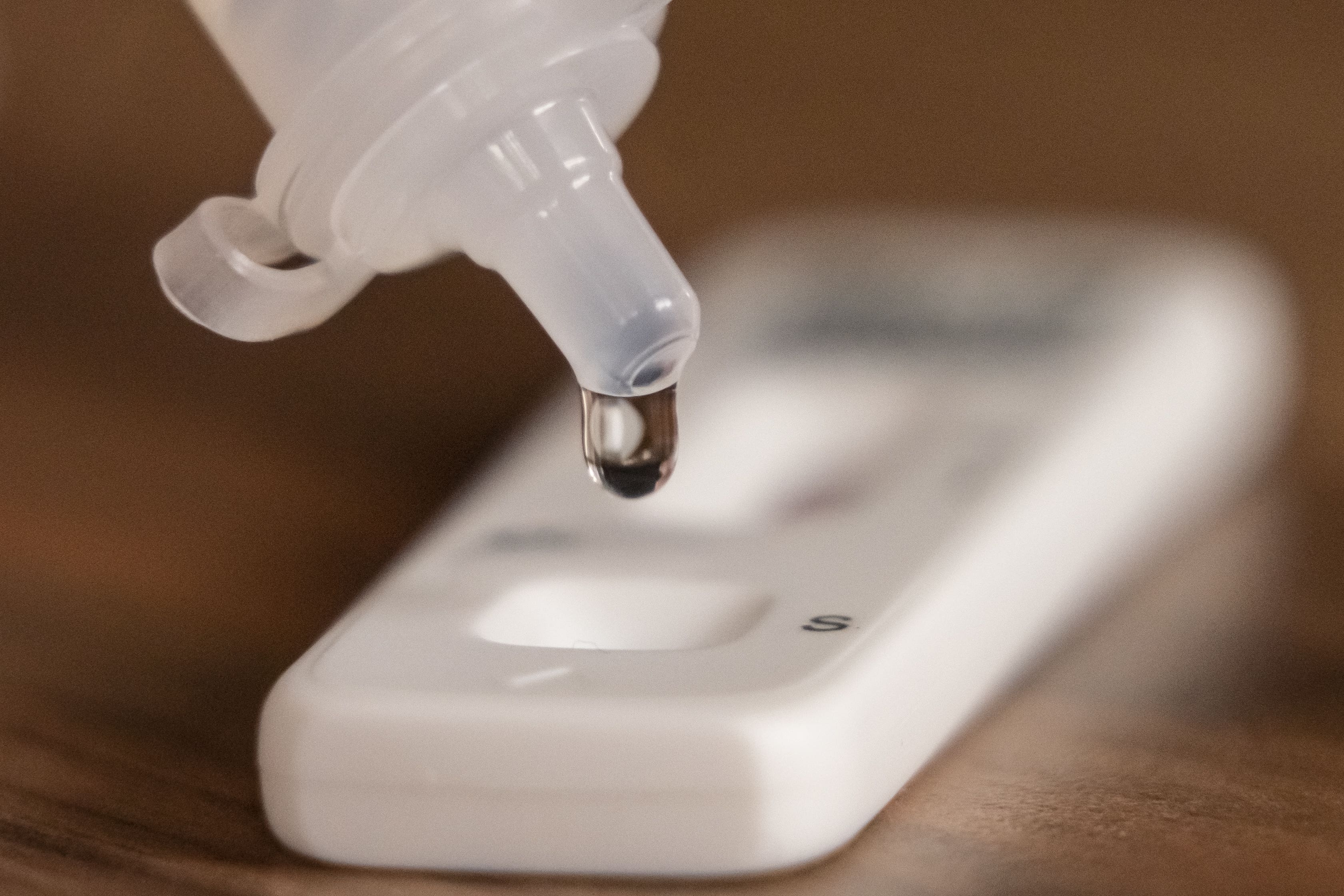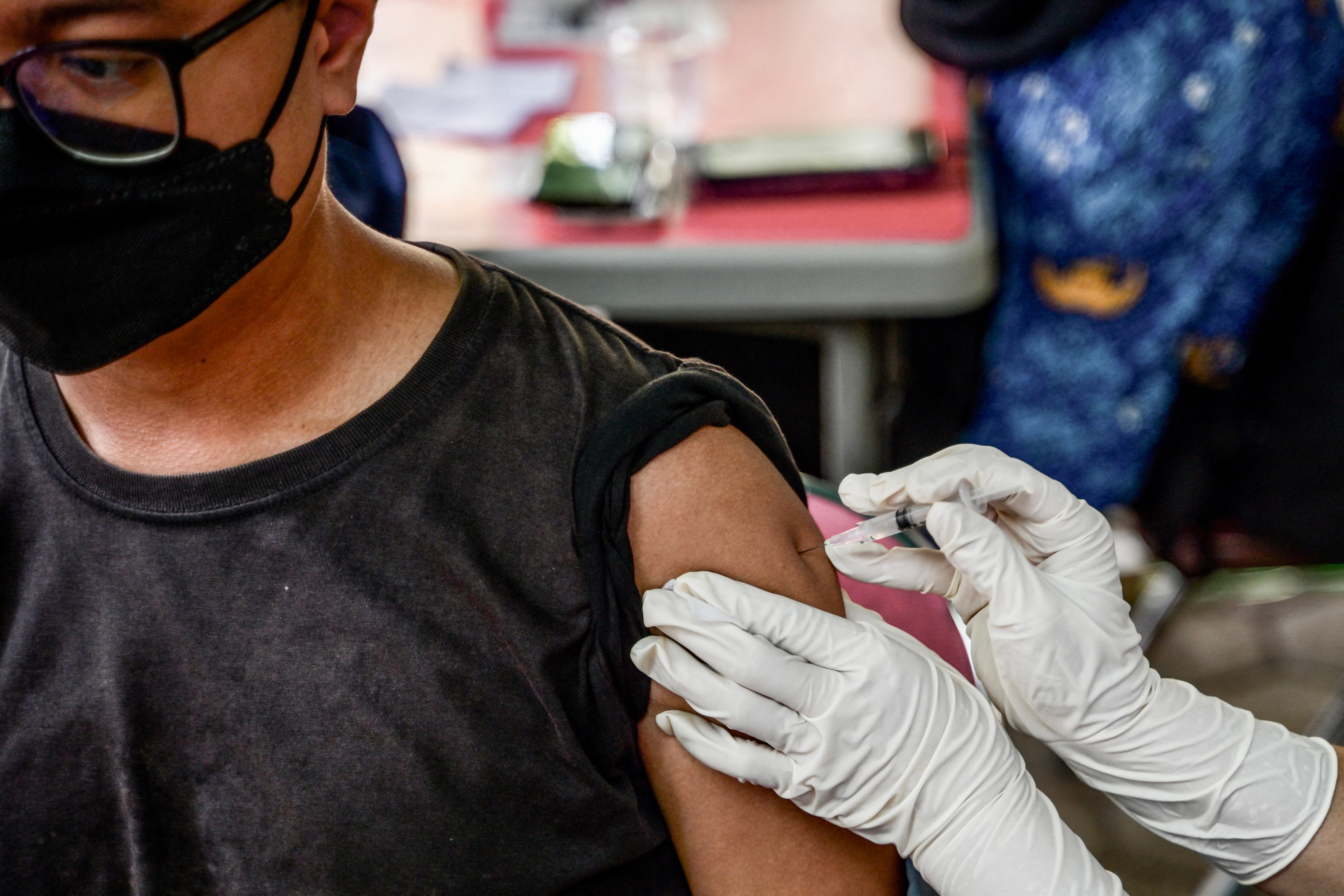Your support helps us to tell the story
From reproductive rights to climate change to Big Tech, The Independent is on the ground when the story is developing. Whether it's investigating the financials of Elon Musk's pro-Trump PAC or producing our latest documentary, 'The A Word', which shines a light on the American women fighting for reproductive rights, we know how important it is to parse out the facts from the messaging.
At such a critical moment in US history, we need reporters on the ground. Your donation allows us to keep sending journalists to speak to both sides of the story.
The Independent is trusted by Americans across the entire political spectrum. And unlike many other quality news outlets, we choose not to lock Americans out of our reporting and analysis with paywalls. We believe quality journalism should be available to everyone, paid for by those who can afford it.
Your support makes all the difference.Covid-19 infection levels are rising, with around one in 24 people in England and Scotland likely to have tested positive for coronavirus in mid-December, up from one in 50 at the start of the month, new figures suggest.
The virus is estimated to be more prevalent among 18 to 44 year-olds than in older age groups, with London and the South East experiencing the highest regional rates.
The data has been published as part of the new winter Covid-19 infection study, which will monitor prevalence of the virus during the next few months.
It is a smaller version of the UK-wide infection survey that ran for nearly three years and which tracked each wave of the virus on a weekly basis.
The new study will publish estimates every fortnight and is limited to just England and Scotland rather than the whole of the country.
The latest figures suggest that 4.2% of people in private households in England and Scotland are likely to have tested positive for Covid-19 on December 13, the equivalent of around 2.5 million people or one in 24.

This is up from 2.0%, or around one in 50 people, on December 1 and 1.5%, or one in 66, on November 14.
The study is being run by the Office for National Statistics (ONS) and the UK Health Security Agency (UKHSA) and is based on data collected from around 150,000 individuals.
Participants use lateral flow devices to test for Covid-19 and then report the results to the ONS, with each person asked to test once a month during a scheduled seven-day period.
Estimates of infection levels in the new study cannot be compared with figures from the previous survey, because the two studies use different methods of testing and compiling the data.
Professor Steven Riley, UKHSA director-general for data and surveillance, said: “At this time of year, the cold weather, shorter days and increased socialising mean that the potential for transmission of respiratory viruses like Covid-19 is particularly high.
“This, as well as the possible impact of new variants, means it’s not unexpected to see cases increasing.
“If you are showing symptoms of Covid-19 or other respiratory illnesses, you should try to limit your contact with other people as much as possible, especially those who are older or more vulnerable.”
Prevalence of Covid-19 is estimated to have increased in every English region over the past two weeks, “in particular London and the South East”, the UKHSA said.

There is “considerably uncertainty” in the estimates for individual regions due to the small sample size, but they suggest that 6.1% of people in private households in London are likely to have tested positive for the virus on December 13, with 4.8% for south-east England and 4.4% for eastern England.
The estimates for other regions are lower, with 3.8% for north-west England, 3.7% for south-west England, 3.6% for north-east England, and 3.4% for both the East and West Midlands and also Yorkshire & the Humber.
Among age groups, the rate is estimated to be highest for 18-34 year-olds, with 5.8% of people likely to test positive, followed by 35-44 year-olds (5.7%) and 45-54 year-olds (4.6%).
Levels are lower for 55-64 year-olds (4.0%) and three to 17 year-olds (3.2%), but are lower still for 65-74 year-olds (2.6%) and people aged 75 and over (2.0%), perhaps reflecting the impact of the latest booster campaign, which offered a fresh jab of coronavirus vaccine to everyone aged 65 and over.
Separate figures published on Thursday by NHS England show the number of people in hospital with Covid-19 looks to be on an upwards trend.
An average of 3,246 patients tested positive for the virus each day in the week to December 17, up from 2,762 the previous week and 2,344 a fortnight ago – but less than half the number at this point last year (6,918).
It is also well below the levels seen during the winters of 2020 and 2021.

Join our commenting forum
Join thought-provoking conversations, follow other Independent readers and see their replies
Comments